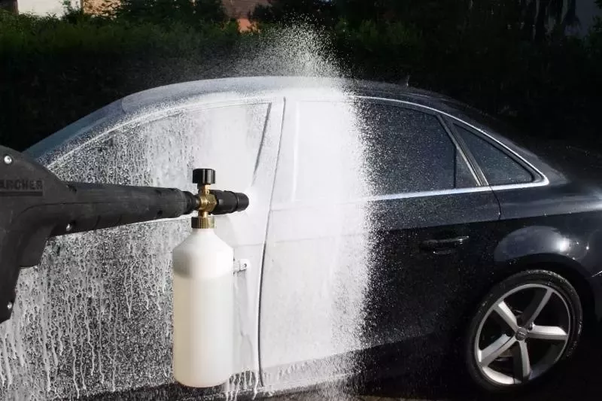
Like a breath of
fresh air…..

A car wash or auto wash is a facility used to clean the exterior and the interior of motor vehicles.
The Process
1. Washing the Paintwork
Although, in order to avoid deep scratches, the vehicle must be rinsed thoroughly before a sponge is applied. To do this, always begin at the top of the vehicle and rinse down. If the weather is particularly hot that day, the process will most likely require repeating, even after just a few minutes. Always make sure that the section of the vehicle that is being washed is wet. If possible park the car in a shady area. Also, morning or afternoon are preferable times.
Pour a liberal amount of soap into the bucket (making sure it is free of debris first) and then fill it up with water. Follow the manufacturers recommended instructions for which quantities of soap and water to use. Dip the sponge into the water and wait for it to absorb as much soapy water as it can. Squeeze the sponge repeatedly while swirling it around in the water. Squeeze excess water out of the sponge and then apply it to the roof of the vehicle. Always wipe the vehicle’s surface in straight motions (to avoid making fine swirl marks), remember to begin with the roof and work down the sides to the bottom of the vehicle. If the weather is hot, then soap the vehicle in small sections (I.E. a panel at a time), and then rinse immediately. If not, the heat can dry the soap onto the vehicle’s paint.
2. Washing the Wheels
It is highly recommended to use a different set of equipment (sponge, bucket etc.) for the wheels. This will reduce the risk of scratching other parts of the paint work, as the wheels are usually the dirtiest part of a vehicle.
There are two common ways to clean the wheels of a vehicle.
The first way is to clean them with soap and a wheel brush. The choice of brush rests largely on the design of the hubcaps or wheels.
First, ensure that the wheels have been rinsed with water. Next, scrub them with the wheel brush being careful not scratch the hubcaps’ paint. Note: hubcaps with grooves in them can contain a lot of brake dust, as can alloy wheels. These problem areas can require extra time and scrubbing.
The second method is to use spray on, rinse off chemicals. Directions for these should be found on the bottle.
An important step is rinsing all of the soap off of the vehicle. Begin at the top and spray downward to avoid splashing soap back up to the top of the vehicle. If your finish has a good coat of wax, make your final rinse with water of a moderate volume and low pressure about an inch above the surface rather than a high pressure spray. This will create a sheet of water producing fewer small water beads and will improve your drying results.
3. Rinsing and drying the vehicle
Afterward, dry the vehicle with a clean, plush micro-fiber towel. Micro-fiber towels are superior to chamois or terry towels and will prevent new scratches from appearing in the paint. As much as possible, dry the vehicle thoroughly including the nooks and crannies (door jambs, under the hood, trunk lid, etc.) to prevent water spots and premature corrosion. It is not recommended to allow the vehicle to dry naturally as minerals in the water will be left behind as the water itself evaporates.





